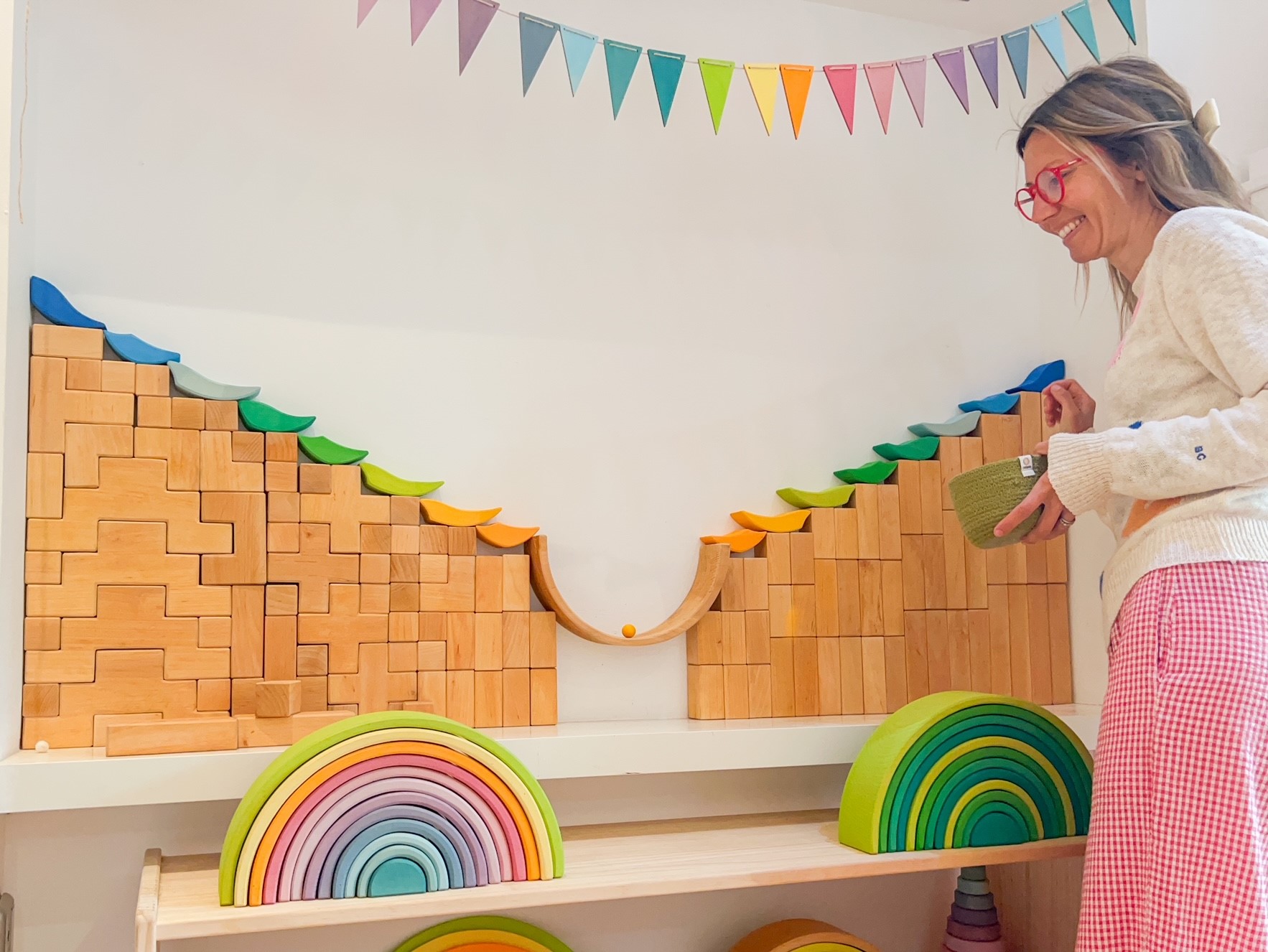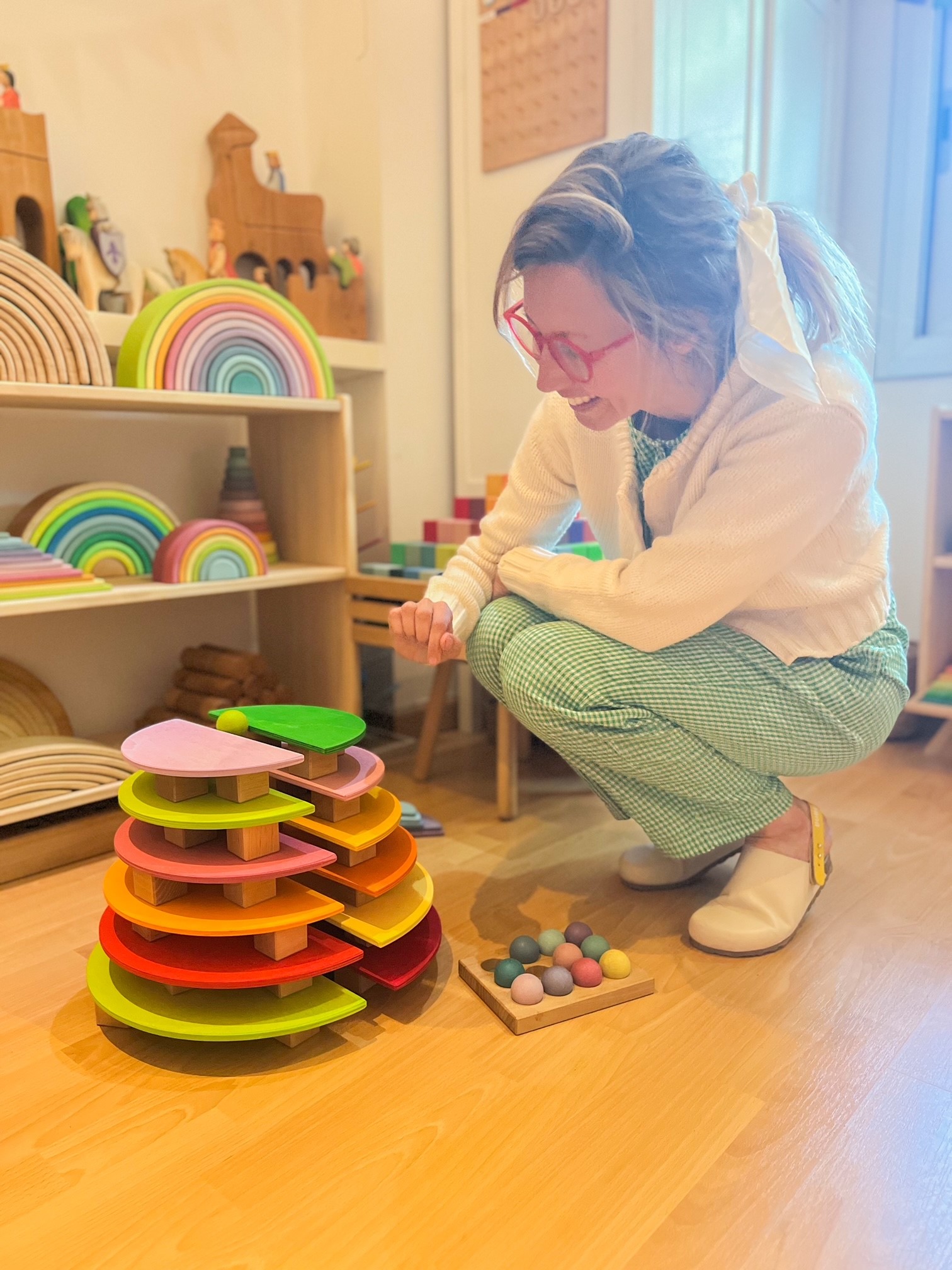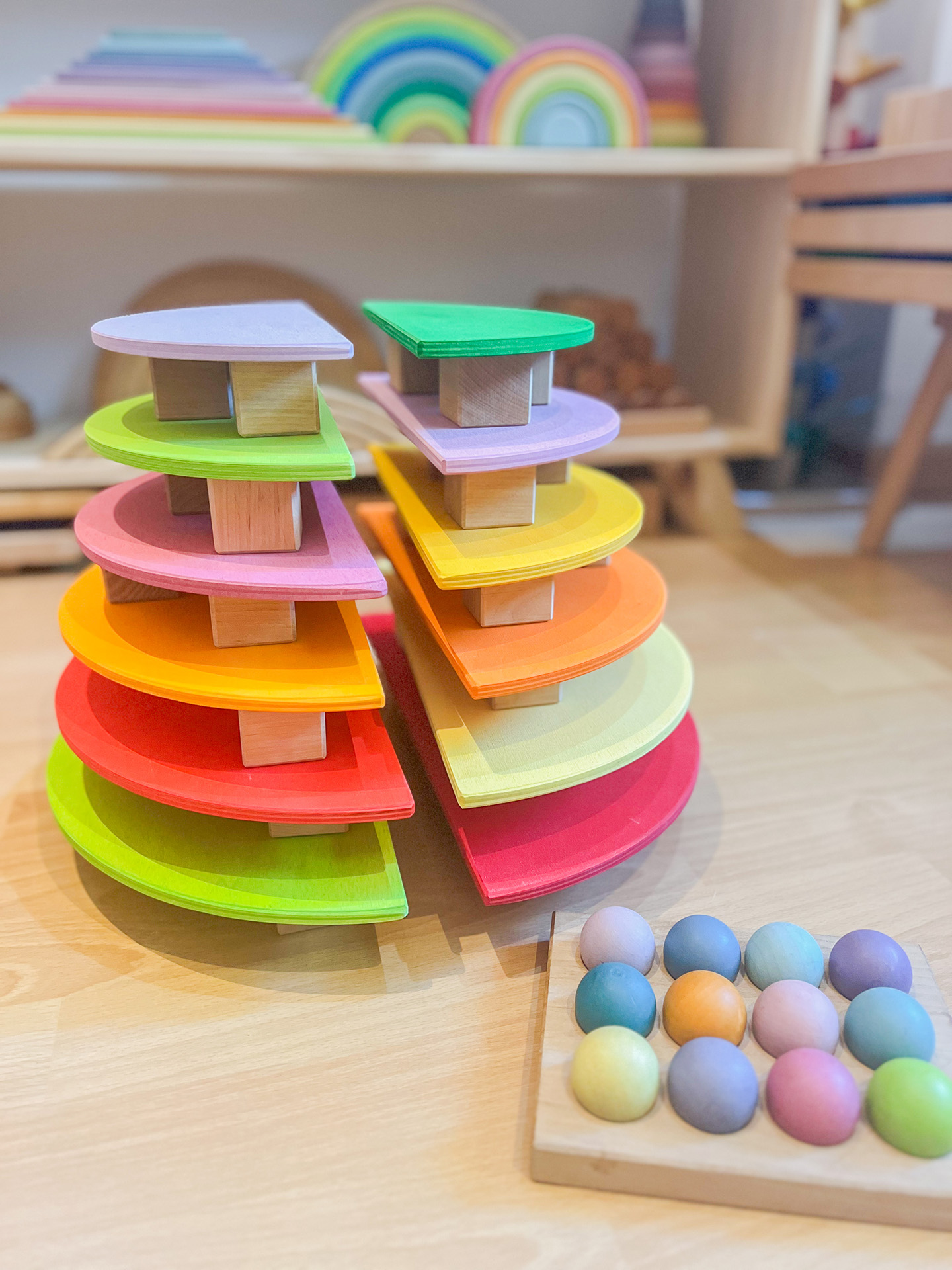Not just for kids - How children AND adults benefit from play

What I find so holistic about these play resources is that they speak to people across all age levels, and they just have that innate appeal! They’re vibrant and tactile and seem to whisper, “pick me up”, “create something”. But why did we stop listening to that whisper and when did it become such a distant relationship between adults and play?

Back to the sacred space of play
Perhaps this is an effect of the busyness of our daily lives, with jobs, errands and never ending “adult to do lists”. Our schedules are so often packed that the gentle whisper of play gets muted by louder calls and eventually it fades away. Then when we have children, we are reminded again in such an emotional way about the pure beauty of play. We witness our children’s lovely moments and start to make time again to accompany them in the sacred space of play. It seems magical. Maybe you even start to notice that you are in fact having your own fun with these play resources? I think this is a healing moment for adults everywhere when we realise that yes, play feels natural and healthy again, and we choose to make space for this experience.
Whenever you can grab your moment, whether alongside your child or sometimes even just a moment on your own it is something you are doing for yourself. You are connecting with and nurturing your inner child, who maybe hasn’t had much attention in recent years. You may notice that you feel more grounded after making time for play after a hectic day and that it helps you to unwind from the pressure of adult life. Little by little the creative play process will start to unfold for you, and as an added bonus, you may notice that your children are dazzled by your play!!!

A win on both levels of self-care and parenting
Whenever I have been playing with the toys during the school day, I intentionally leave out what I created whether it’s a marble track, a castle, a mandala etc. This is distinct from an intentional invitation to play, which is a play scenario that one might create with exactly the kid’s developmental needs in mind, often with certain educational objectives. This is rather what I’ve started calling a “passive invitation to play”. It’s something I created just for my own play enjoyment and then left out to see what the kids think! Often times the children will start playing with it immediately and then evolve the original concept into their own upgraded variation of play! I would call this a win on both levels of self-care and parenting! When we are naturally moving in a congruent way with our children, really beautiful things start to happen.
The Montessori way to play
I remember distinctly when I was doing my Montessori training many years ago that the teacher training process was heavily based on our own hands-on experience with the materials. We needed to touch and interact with every material in the children’s environment and understand its potential in an intimate way. At the time I didn’t realise it, but they were helping us to build our own loving relationship with the play resources. And this is such a brilliant aspect of the Montessori process, because ultimately, young children are absorbent sponges and they will notice immediately how connected we are to the environment and materials we are providing them with. Are we fascinated and excited ourselves, or are we off on other tasks and distant to the play process? Do we prioritise our own play and creative process in front of them? Do we share our own satisfaction from a well enjoyed play cycle? All of this will eventually be mirrored in their play and developmental journey.
With the advantage of having known this, I’ve made efforts to create play spaces wherever we lived which felt warm and appealing to both the children and the adults in the home. I needed to feel that I was also connected to this space and that I found the toys attractive and inviting. And so little by little began our collection of open-ended wooden toys. Over time I found myself really enjoying not only preparing the environment for the children but also enjoying the practice of play so much myself. And the more so I allowed myself to become closely aquatinted with these toys, the more so my children wanted to play and create on their own. It is the rare occasion now a days that I will set up an intentional “invitation to play” for my kids as they typically launch their own self-guided play.

The value of play
“Play is the work of the Child” is likely a quote many are familiar with by Maria Montessori. In Montessori terms, we define play as work because we see that a child’s efforts to learn through play are anything but futile. Every moment of play is understood as purposeful and meaningful and so we can recognise play as something which is just as important as work. However, in adult culture (as mentioned before) we have somehow become distant to the innate value of play. This is where our children actually have the amazing potential to rescue us in a way from our own seriousness and busyness. They are our daily reminders that yes, play is actually very serious business and should not be skipped over!
I encourage you to consider what sort of play nourishes you, and what do you feel excited to play with? Do you feel connected to the play materials and space in your home or do you have a desire to evolve the situation in order to feel a stronger relationship with it? Take it day by day and remember that play is definitely “Not just for kids”!

